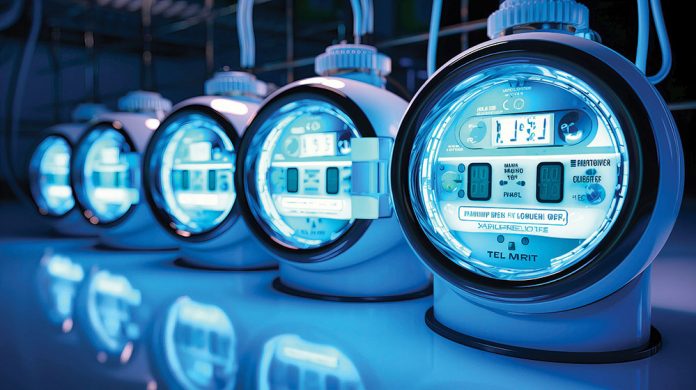Water companies urgently need to address leaking infrastructure on customer properties. Smart meter technology will be critical in enabling them to find and fix issues, as Ivan Pickering, Head of Sales for Grid Software in the UK & Ireland at Siemens explains.
More than 50 litres of water are wasted in England and Wales for every person, every day, according to Ofwat. That means that about a fifth of all the water that’s distributed never makes it to its intended destination.
This represents a huge water-security challenge and despite the UK’s plentiful rainfall, hosepipe bans and depleted reservoirs are an all-too-common occurrence. With the problem expected to get worse in the years ahead as climate change brings more frequent spells of dry weather, minimising losses is an urgent priority.
Recognising this, Ofwat has set targets for the industry to reduce leakage by at least 16% by 2025, backed by a range of financial incentives and penalties. Longer term, water companies have committed to a 50% reduction from 2017/2018 levels by 2050.
Locating leaks can be a far from straightforward task – yet as the sector embraces digital transformation, some forward-thinking water companies are starting to deploy technology to transform their ability to find and fix leaks across the network.
Tracking the problem
With 347,000km of water mains and a further 230,000km of customer-owned supply pipes in the UK, identifying where water is being lost can be like finding a needle in a haystack. For years, operators have employed various techniques – from sniffer dogs to satellite imagery – to help plug the flow of water out of the network.
Technology will be critical in creating the solutions that will deliver transformational change for water companies, with automation and AI at their heart.
For example, acoustic sensors are now being used to detect pipe noises which are helping to deliver better data on the condition of network assets in real time, and AI is then enabling operators to analyse it almost instantly, meaning they can locate and plug leaks much quicker and predict which assets might fail next.
But alongside maintaining critical national infrastructure, an essential part of the battle against leaks is detecting and tackling the losses on customer properties, which Water UK estimates accounts for 25% of overall leakage. These are still the responsibility of water companies, even though they don’t own the pipes.
Removing the blind spot
Digital smart meters and the tech-driven data collection and analysis will play a crucial role in tackling this. The detailed consumption analysis provided by the technology grants both water companies and consumers greater visibility on sudden peaks in usage, helping to indicate leaks and reveal inefficient practices or equipment.
In September 2023, the Environment Agency reported that only 14% of households in England had smart meters. That means there is currently no way to monitor a large majority of the customer-side supply pipes, making it very difficult to spot abnormal activity that can indicate a leak.
That’s why the planned rollout of smart metering is such welcome news. Ofwat forecasts that around 40% of properties will be metered by 2030 and 65% by 2050.
This will give companies access to millions more data sources, including the kind of household-by-household consumption that will allow them to accurately spot suspected leaks on customers’ properties.
It will also help reduce per-capita consumption by encouraging bill-payers to change their behaviour, in the same way that smart meters have been proven to do in the energy market.
Harnessing the data
While the nationwide meter rollout will provide companies with a large volume of consumption data, another key question will be how to turn these millions of points of near real-time information into actionable intelligence.
Water companies will need to upgrade their networks to become smart networks by leveraging software and putting systems in place that can analyse large volumes of data and accurately identify where issues lie. AI will once again play an important part here, monitoring millions of real-time readings and flagging up leaks as and when they occur.
At Siemens, we’re working with Northumbrian Water and Thames Water to build a meter data management system that is connected to millions of smart meters across their customer base. The platform has already helped boost the rate at which ‘points of interest’ – potential leaks that need investigating – are being identified by seven per cent. And the Meter Data Management (MDM) X SaaS platform has the capacity for millions more meters to be added as the company’s smart meter rollout progresses.
This type of pioneering project will be the focus of our upcoming Transform 2024 event. Taking place in Manchester, the two-day conference will provide a platform for industry leaders from a wide range of sectors to share knowledge on tackling the biggest challenges they face.
Ultimately, with water supplies set to come under ever increasing pressure in the coming years, it’s essential the sector does what it takes to solve the leakage challenge.
Industrial technology is evolving at a rapid pace, Technology will provide the answers and it’s encouraging that water companies across the UK are starting to digitise these processes. This type of smart meter roll-out has the potential to revolutionise how water companies tackle leaks and will be central to creating a more efficient network.



